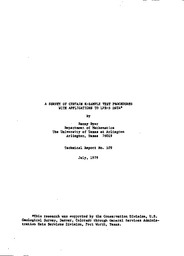| dc.description.abstract | **Please note that the full text is embargoed** ABSTRACT: When dealing with k independent samples, it is frequently of interest to jointly assess the underlying population distributions. Usually such an
assessment is carried out by performing k independent tests; that is, we test the null hypothesis [see pdf for notation] that the population from
which the [see pdf for notaion] sample was drawn has some specified distribution. Combining the results of such independent tests may then be carried
out by Fisher's method (1950, pp. 99-101). Specifically, let Ti be the test statistic associated with the [see pdf for notaion] sample. Suppose large
values of Ti are considered critical for testing H. The attained significance level (ASL) or P-value is denoted by Pi; that is, if a is the observed
value of the test statistic Ti , then Prob[see pdf for notaion]. Furthermore, [see pdf for notaion] has a x2 distribution with 2k degrees of freedom
when H01 ,...,HOk are true. If a null hypothesis is not true, then the corresponding Pi will tend to be small resulting in a larger S. Hence the
right-tail of the distribution of S is the critical Littell and Folks (1973) have shown that Fisher's method in asymptotically optimal among
essentially all methods of combining independent tests. | en |

